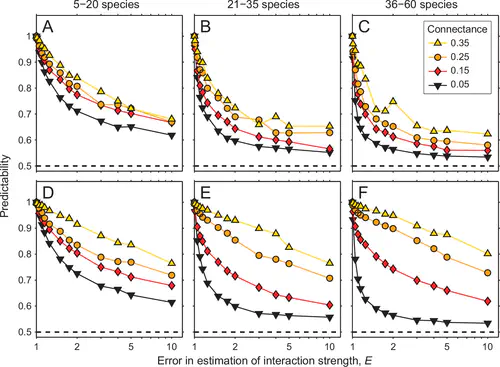
Abstract
All ecosystems are subjected to chronic disturbances, such as harvest, pollution, and climate change. The capacity to forecast how species respond to such press perturbations is limited by our imprecise knowledge of pairwise species interaction strengths and the many direct and indirect pathways along which perturbations can propagate between species. Network complexity (size and connectance) has thereby been seen to limit the predictability of ecological systems. Here we demonstrate a counteracting mechanism in which the influence of indirect effects declines with increasing network complexity when species interactions are governed by universal allometric constraints. With these constraints, network size and connectance interact to produce a skewed distribution of interaction strengths whose skew becomes more pronounced with increasing complexity. Together, the increased prevalence of weak interactions and the increased relative strength and rarity of strong interactions in complex networks limit disturbance propagation and preserve the qualitative predictability of net effects even when pairwise interaction strengths exhibit substantial variation or uncertainty.